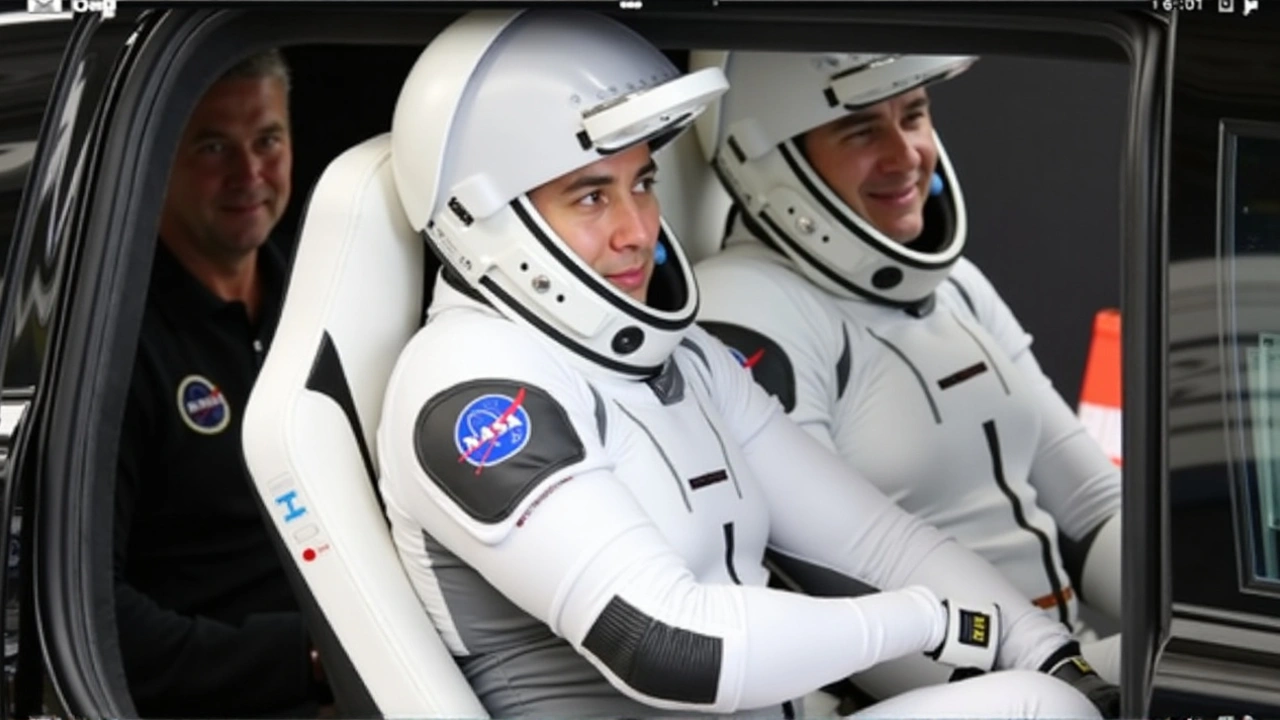SpaceX's Crew-9 Mission to the Rescue
The latest mission by SpaceX, known as Crew-9, has taken on an urgent and critical role: rescuing NASA astronauts Sunita Williams and Barry 'Butch' Wilmore from the International Space Station (ISS). Originally, the pair were meant to spend only a week in space, but their stay has dramatically extended due to severe technical issues with the Boeing Starliner spacecraft. Initially considered a routine mission, it has now morphed into a rescue operation, drawing worldwide attention and concern.
The Boeing Starliner, beset by what NASA describes as 'serious technical glitches,' has been deemed unsafe for the astronauts' return. Both Williams and Wilmore have been in space for more than 81 days, a significant extension from their planned week-long mission. The situation has highlighted the need for redundant safety measures and a robust backup plan, which is where SpaceX’s Crew Dragon capsule comes into play.
Preparing for the Unexpected
Nate Heise, a senior engineer at SpaceX, mentioned that the Crew-9 mission, originally planned for four astronauts, is now being adjusted to bring back Williams and Wilmore safely. 'Plans are dynamic, but safety is our utmost priority,' says Heise. This sentiment is echoed by the astronauts themselves, who have been communicating with ground control while maintaining their mental and physical health aboard the ISS.
NASA has opted to bring the malfunctioning Starliner back to Earth without a crew to collect more data. In the meantime, Crew Dragon stands ready for the mission, with a planned takeoff in February 2025. According to SpaceX, this shift demonstrates the strength of collaborative efforts between private companies and governmental space agencies.
Living Conditions and Challenges
Life aboard the ISS comes with its own set of unique challenges. The $150 billion flying laboratory is equipped with living facilities, sleeping quarters, and even a gym. However, prolonged exposure to high levels of cosmic radiation and the artificial environment poses numerous risks. These range from physical changes in vision and bone density to psychological challenges due to isolation and confinement. 'Extended stays like this test the limits of human endurance and adaptability,' stated Dr. Ellen Korpela, NASA's lead medical officer for the ISS.
Russian cosmonaut Sergey Krikalev, who holds the record for the longest cumulative time spent in space, has expressed his confidence in the mission's success. 'The combination of experience, technology, and international cooperation will make this rescue mission a historic one,' Krikalev asserted.
The Importance of Redundancy and Safety
The situation shines a spotlight on the importance of having backup systems and plans when it comes to space missions. The redundancy is designed to mitigate risks and ensure astronaut safety, an aspect that was starkly highlighted by the Starliner's unforeseen issues. 'Space exploration is fraught with uncertainties,' adds Heise. 'The unexpected is, ironically, the only thing we expect.' This sentiment underscores the need for comprehensive planning and robust safety measures in all space missions.
It's worth noting the ISS's myriad contributions to science and technology. Research conducted aboard the station has led to numerous breakthroughs, ranging from biomedical advancements to new materials and technologies that benefit life on Earth. However, the incident with the Starliner adds a layer of complexity to ongoing discussions about the future of space travel and the collaboration between commercial and governmental entities.
Looking Forward: The Next Steps
The Crew-9 mission, now set for February 2025, will mark another milestone in the burgeoning partnership between SpaceX and NASA. As the launch date approaches, preparations ramp up at both SpaceX's headquarters in Hawthorne, California, and NASA’s facilities at Kennedy Space Center in Florida. This mission, while unplanned in its rescue role, demonstrates the resilience and adaptability required for human space exploration.
Barry 'Butch' Wilmore, known for his upbeat demeanor, shared a message with ground control: 'We’re staying strong up here, and we’re ready for our ride home.' Such spirit and resilience capture the essence of what it means to push the boundaries of human capability and endeavor.
As we approach the launch date, the world will watch closely. This mission isn't just about bringing home two astronauts; it's about forging a path for the future of human space exploration, a future where partnerships and preparedness ensure that every journey—planned or otherwise—has the tools and support needed to succeed.

Comments